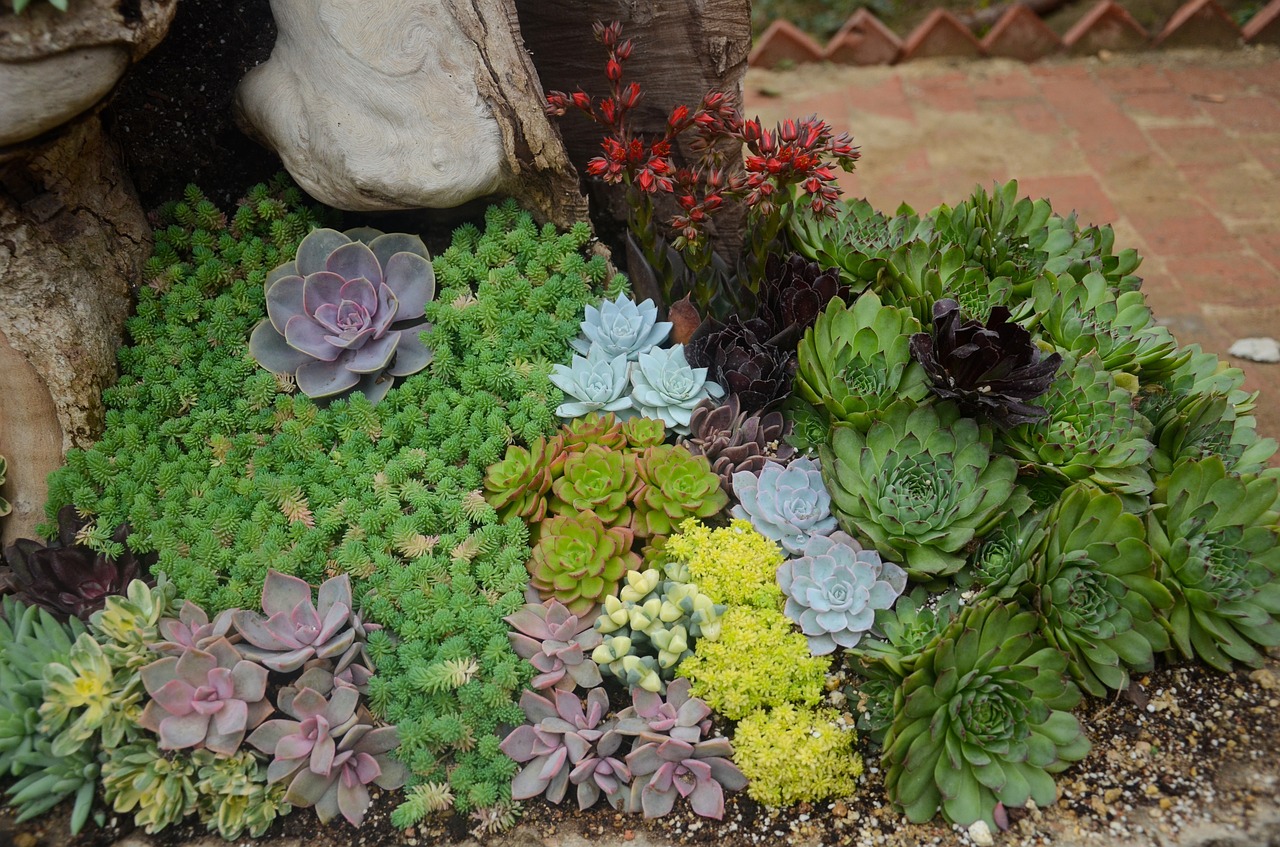Types Of Succulents – Meet The Families And Know How To Buy Your Succulents

Succulents get their name from the Latin word sucus, which means to juice or sap. If you snap a succulent leaf in half you’ll see where this term originates from. Their leaves have water-storage capacities, which is the reason they are so easy to tend to—they require little water since they store it in their leaves. Succulents come in many shapes, textures and colors. Here are the most well known sorts:
1. Agave – The agave family offers plants for inside and out, with an extensive variety of big and little assortments. Outdoors they offer beautiful additions with strong deliberate shapes to landscapes in warm climates. They come in variegated structures, for example, Variegated Smooth (Agave desmettiana ‘Variegata’), which is truly a gem. As indoor plants, they are sculptural and trendy. At the point when developed inside, most agave won’t bloom, yet their shape and color are sufficiently delightful all alone. For inside, attempt Butterfly (Agave potatorum) or Twin Flower (Agave geminiflora).
2. Aloe – Despite the fact that Aloe vera is the most widely recognized sort of aloe, there are a lot of different assortments accessible. Many have variegated foliage, which adds to their visual interest. They can likewise deliver tall stems of brilliantly shaded blossoms if they get enough light.
3. Crassula – There are more than 1400 distinct types of crassula. The most popular individual from this family is the jade plant. The name crassula originates from the Latin word signifying “thick.”Take one look at this plant’s leaves and you’ll see why it got its name. The leaves of crassula come in many shapes, which is an engaging aspect regarding this plant. It is accessible in many different colors as well.
4. Echeveria – The rose-shape leaf development of echeveria makes it a most loved in the succulent world. Accessible in light green and light blue shades, this succulent has enough texture to be planted separately or joined with different succulents in a bowl.
5. Euphorbia – In the event that you like treelike types of succulents, you’ll cherish individuals from the beautiful euphorbia family. Here and there mixed up for desert flora, these columnar plants are additionally called stem succulents. The majority of the tall thin euphorbia hail from desert territories. Euphorbias are a various family since garden spurge and poinsettia are both in the family.
6. Gasteria – Locals of South Africa, most gasteria have thick, tonguelike leaves. Like all succulents, they adore well drained soil. Their blooms are stomach formed, which is the manner by which they got their name: The Latin word for stomach is “gaster.”
7. Haworthia – These South African locals are related with aloe and gasteria. They shape charming little rosettes and can develop separately or in clusters. Little and slowly developing, haworthia are regularly called zebra cactus in view of their cool stripes.
8. Kalanchoe – This plant sports lots of looks. Kalanchoe thyrsiflora has flat, pancakey leaves, so it additionally passes by the name flapjack. Kalanchoe blossfeldiana has green succulent leaves and intensely colored blossoms. Kalanchoe tomentosa is delicate and fluffy.
9. Portulacaria – This succulent has a shrubby development with little leaves developing along the long stems. Some stems can grow even up to 2 feet long, making them perfect for succulent containers as the “spiller.” Portulacaria additionally comes in variegated structures.
10. Senecio – This lovely succulent has fingerlike leaves and comes in delicate hues, for example, dim green and powder-blue. The limited foliage and shrubby development propensity makes senecio a decent blender with different succulents.
What to look for when you buy succulents
First of all, you should check the soil to see if it is dry. You would’t like to take home an overwatered succulent. Also, the leaves of succulent plants should not be withered or dried out looking. This is a sign that the plant has been underwatered which is as bad as overwatering. Bring a box to set the succulents in when driving them home. The soil is exceptionally dry and will leave the pot effectively. A container keeps the plant upright and from overturning.
Succulents outdoors – If you live in a warm-climate range, succulents make flawless landscape plantings. These perennials will show signs of improvement consistently. Gardeners in the North may appreciate succulents in the garden and bring them inside when the climate turns cool. Pick a well-drained spot, for example, the highest point of a sunny incline or a stone garden. Try not to plant succulents where they’ll be wet for expanded periods.


Be careful when repotting – Succulents have little root systems so they don’t require repotting frequently. Contingent upon the variety, once every three or four years might be sufficient. How do you know when is it time? At the point when the roots firmly fill within the compartment or if the plant has become too heavy to remain stable in its holder. However, be careful! Succulent stems and leaves are water-filled yet fragile and can be effortlessly broken.


